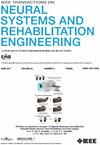在高通道计数系统中优化神经记录前端以提高尖峰排序精度。
IF 4.8
2区 医学
Q2 ENGINEERING, BIOMEDICAL
IEEE Transactions on Neural Systems and Rehabilitation Engineering
Pub Date : 2025-03-29
DOI:10.1109/TNSRE.2025.3574917
引用次数: 0
摘要
脉冲分选是一种关键的信号处理技术,用于从原始细胞外记录中提取信息。其性能受神经记录前端特性的影响。本研究探讨放大器、滤波器和模数转换器(adc)的设计选择如何影响成熟的尖峰排序算法的准确性。我们的主要目标是确定确保高排序精度的最低要求,同时促进功率和面积效率高的模拟前端,这对于仅多通道记录的应用尤其需要。为了实现这一目标,我们使用合成数据集和真实数据集作为地面真相,通过神经记录前端的通用MATLAB模型进行处理,该模型模拟影响信号完整性的关键电气参数。这些参数包括滤波器阶数和截止频率、ADC分辨率、ADC采样频率和非线性。我们的研究结果表明,在700 Hz至7.5 kHz范围内的一阶带通巴特沃斯滤波器,以及在8位分辨率下提供15 kHz采样频率且无丢失代码的ADC,可以获得最佳的尖峰排序结果。这些见解对于设计高通道数的神经接口至关重要,而CMOS电路必须有效地优化。本文章由计算机程序翻译,如有差异,请以英文原文为准。
Optimizing Neural Recording Front-Ends Toward Enhanced Spike Sorting Accuracy in High-Channel-Count Systems
Spike sorting is a pivotal signal-processing technique used to extract information from raw extracellular recordings. Its performance is influenced by the characteristics of the neural recording front-end. This study explores how design choices in amplifiers, filters, and analog-to-digital converters (ADCs) affect the accuracy of well-established spike sorting algorithms. Our primary objective is to identify the minimal requirements that ensure high sorting accuracy while facilitating power- and area-efficient analog front-ends, which is especially needed for multi-channel recording-only applications. To achieve this, we use both synthetic and real datasets, serving as ground truth, processed through a generic MATLAB model of a neural recording front-end that simulates key electrical parameters impacting the signal integrity. These include the filter order and cutoff frequency, ADC resolution, ADC sampling frequency, and nonlinearity. Our findings indicate that optimal spike-sorting results are obtained with a 1st-order bandpass Butterworth filter ranging from 700 Hz to 7.5 kHz, coupled with an ADC that offers a 15-kHz sampling frequency at 8-bit resolution and no missing codes. These insights are crucial for designing high-channel-count neural interfaces where CMOS circuits must efficiently be optimized.
求助全文
通过发布文献求助,成功后即可免费获取论文全文。
去求助
来源期刊
CiteScore
8.60
自引率
8.20%
发文量
479
审稿时长
6-12 weeks
期刊介绍:
Rehabilitative and neural aspects of biomedical engineering, including functional electrical stimulation, acoustic dynamics, human performance measurement and analysis, nerve stimulation, electromyography, motor control and stimulation; and hardware and software applications for rehabilitation engineering and assistive devices.

 求助内容:
求助内容: 应助结果提醒方式:
应助结果提醒方式:


